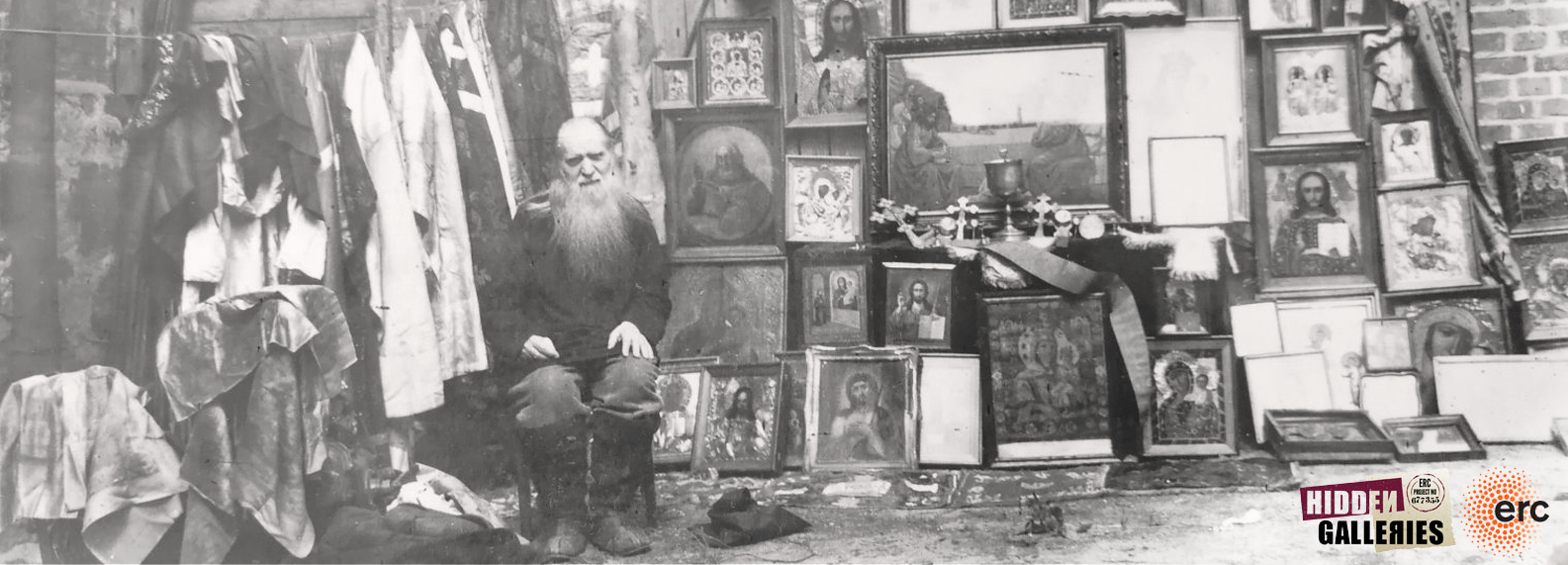Inochentism
Item set
Title
Inochentism
Description
Inochentism is the name given to a religious movement that emerged in the border regions between Romania and Russia in the first decade of the twentieth century. The name of the movement derives from the name of its founder, the monk Inochentie (Innocent) of Balta (1875-1917) who attracted a large following of pilgrims to the site of the relics of a nineteenth century holy man named Feodosie Levitsky. The Russian Orthodox Church and the Tsarist authorities became concerned about the mass movement that attracted mainly ethnic Moldovans (Romanian speakers from the Russian provinces of Bessarabia, Kherson and Podolia) and took measures to prevent Inochentie from preaching his fervent message of repentance and the impending End of Days. Inochentie was exiled to the Russian far north from 1913 to 1917 during which time his followers built a utopian underground community near the town of Balta (today in Ukraine). During the Russian revolution, Inochentie was released and returned to Balta but died soon after. In the years that followed, both the Soviet and Romania authorities took extreme repressive measures to eliminate the diverse communities that had formed due to Inochentie's legacy. Inochenism is often classed alongside other Orthodox dissent movements that emerged during the first decades of the twentieth century such as the Ionnites (followers of John of Kronstadt).
For further reading see:
James A. Kapaló, Inochentism and Orthodox Christianity: Religious Dissent in the Russian and Romanian Borderlands (London and New York: Routledge, 2019).
Related online resources:
For further reading see:
James A. Kapaló, Inochentism and Orthodox Christianity: Religious Dissent in the Russian and Romanian Borderlands (London and New York: Routledge, 2019).
Related online resources:
Creator
James Kapalo and Dumitru Lisnic
Bibliographic Citation
James A. Kapaló & Dumitru Lisnic, "Inochentism"
Date Created
2018
Items
-
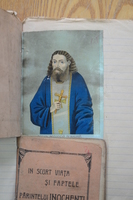
Postcard-icon of Feodosie Levițchi
This postcard icon portrays Feodosie Levițchi (Romanian spelling) or Teodosie Levitsky (in Russian) (1791-1845), of Balta (today’s Odessa Oblast, Ukraine). It was confiscated from a Bessarabian peasant in 1938 who had been charged with Inochentist propaganda and sentenced to 45 days imprisonment. Feodosie was an important figure for the Inochentist movement as Inochentie of Balta (1875-1917) was instrumental in sponsoring the cult of his deceased predecessor and distributed mass produced icons (like the one seen here) and miracle stories across Ukraine and Bessarabia to encourage pilgrims to v -

Mugshots of Spiritual Fathers from Odaia, Moldova
The mugshot is one of the main visual materials produced by the secret police during their investigations. Together with fingerprints and personal information, mugshots connect the police image of the alleged enemy to an actual person, whom they show stripped of personal dignity and agency, often head-shaven, dejected, pensive and nervous. Mugshots are contained in almost all secret police criminal investigation case files and were produced according to a very precise set of rules which makes them very similar from one case to another. Although at a first glance they seem less interesting than -
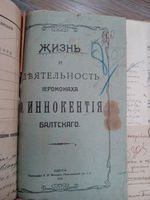
Booklet about the life of Inochentie of Balta Ukraine
The image depicts the cover page of a booklet published in 1918 in Odessa by the followers of Inochentie of Balta. It was confiscated by the Soviet secret police in 1921 from the Inochentist community of the village of Lipetskoe (Balta county, Odessa Governorate). The village of Lipetskoe was a spiritual center of Inochentism, where the followers of Inochentie of Balta built an underground monastery and established an utopian communal society called Gradina Raiului, the Garden of Paradise. The booklet contains 19 pages which describe the life of Inochentie of Balta, the founder of the Inochen -
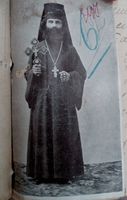
Photo-icons of Inochentie of Balta Ukraine
The four photo-icons of Inochentie of Balta were confiscated by the Soviet secret police in 1921 from the Inochentist community of the village of Lipetcoe (Balta county, Odessa Governorate). The village of Lipetcoe was the spiritual centre of Inochentism, where believers established an underground monastery and a utopian communal society called Gradina Raiului (the Garden of Paradice). In September 1920, a few months after the Red Army occupied Lipetcoe, Soviet authorities closed the monastery and expelled a number of Inochentist leaders from Gradina Raiului. The second major repressive ope -
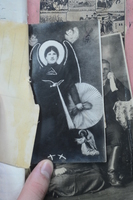
Photo-icon of Alexandru Culeac as the Archangel Michael Bessarabia
The three images presented here all show variants of the same photo-icon of Alexandru Culeac portrayed as the Archangel Michael. In the first image he appears alone; in the second image, his photograph appears next to that of Inochentie of Balta, and the third image is a reproduction of the photo-icon that appears inside the front cover of a booklet containing Alexandru Culeac's visions entitled "A vision that appeared in 1920". The presence of multiple examples of this photo-icon in the same file reflects the importance of this devotional image to the Archangelist community. Archangelism fo -
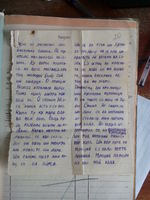
Confiscated handwritten Inochentist hymn Moldova
The images show an Inochentist handwritten hymn found by the Soviet secret police officers on an arrested Inochentist preacher in 1952 in Moldova. The hymn describes Jesus's preaching to his followers on the Mount of Olives about the End Time. The Apocalypse, according to the hymn, will begin when people would abandon the church. Then, according to the narrative, the wrath of God would descend on sinners and only those who do not abandon the true faith will be saved. The hymn is written in Romanian using the Cyrillic script. The preacher, who may not be the author of the text but was probably -

Confiscated group photograph of Inochentists Romania
This confiscated photograph was included in a personal file of an Inochentist leader alongside several others collated by the Romanian Securitate. The image shows the male leader flanked by two women from the community. Such group and community photographs feature heavily amongst the corpus of confiscated images in the secret police archives in Romania as for the secret police they were a convenient means of tracing networks and personal relationships of the religious underground. The case file does not state when the images were confiscated but from an Informer Report that appears elsewhere -

Inventory and confiscated items from a house search of an Archangelist-Inochentist Romania
The images show an inventory and confiscated photographs included in a case file forwarded to the Romanian 3rd Army Military Court on 2nd December 1938. The first image shows the inventory of items found in the house, which was located in Fălciu county. The officer lists the following Inochentist "propaganda" materials: "1. A brochure entitled 'The Deeds of the Archangel Michael', 2. a small icon of saint Paraschiva, 3. a cross sculpted from wood, 4. three photographs of Culeac dressed in white with a cross on his chest, 5. a photograph of Culeac dressed in vestments." The second image shows o -
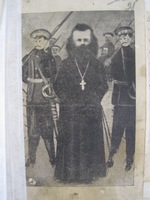
Inochentist postcard-icons Transnistria
The images show postcards and mass produced photographs confiscated from a group of arrested Inochentists in February 1942 in the village of Cuibușor, in Romanian-occupied Transnistria. Image 1 and 2 show the front and reverse of a postcard. On the front, the monk Inochentie (1875-1917) is shown in a scene from his vernacular hagiography in which he is under arrest, surrounded by Tsarist soldiers after his attempted to escape from exile on Solovetsky island. The reverse of the postcard, comprises short quotes and adaptations from the New Testament. Here text and image were configured in a rel -
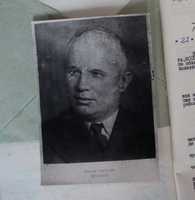
Defaced portraits of Soviet leaders Moldova
These mass produced postcard-sized portraits of three soviet leaders, Nikita Khrushchev, Lavrentiy Beria and Anastas Mikoyan, have been torn and inserted into an envelope as evidence in a secret police personal file referring to a collective penal case. They were found during the search of a house of an Inochentist leader on February 11th 1953, a few weeks before Stalin’s death. From the perspective of secret police, the disrespectful attitude towards the abovementioned leaders of those who had torn these pictures equated to an anti-Soviet act. The origin of the defaced images is open to a n -

Archangelist Staged Ritual Moldova
This photograph which was taken by Soviet secret police officers appears to capture a ritual performed by Archangelists (a branch of the Inochentist movement) in one of their underground chapels. On closer inspection, however, it is evident that this is not a surveillance photograph but rather a staged reenactment performed for the camera. The framing, camera angle, lighting and mood of the photograph were all determined by the secret police photographer with the intention of creating a powerful image for use by the regime. Indeed, the two Archangelists, shown wearing ritual clothing and holdi
